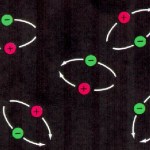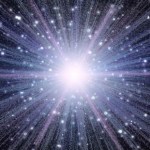electron
The big physics story of the week is undoubtedly the new limit on the electric dipole moment (EDM) of the electron from Ed Hinds's group at Imperial College in the UK. As this is something I wrote a long article on for Physics World, I'm pretty psyched to see this getting lots of media attention, and not just from physics outlets.
My extremely hectic end-of-term schedule and general laziness almost make me want to just point to my earlier article and have done with it. But really, it's a big story, and one I've been following for a while, so how can I pass up the chance for a ResearchBlogging…
The big physics story at the moment is probably the new measurement of the size of the proton, which is reported in this Nature paper (which does not seem to be on the arxiv, alas). This is kind of a hybrid of nuclear and atomic physics, as it's a spectroscopic measurement of a quasi-atom involving an exotic particle produced in an accelerator. In a technical sense, it's a really impressive piece of work, and as a bonus, the result is surprising.
This is worth a little explanation, in the usual Q&A format.
So, what did they do to measure the size of a proton? Can you get rulers that small…
I love this story. It is a story of how ideas changed about the nature of the atom. These are the notes (and diagrams) I use when I teach the atomic nature of matter to non-science majors. The best thing about this story is that it is a great example of science. Science (or scientists) build a model. If new evidence comes along, the model gets changed. There are several other websites that describe all of this stuff, I will list a couple at the end of this post.
Typical textbook model of an atom
Look in an intro, non-science majors textbook and you will probably see a picture like this…
There is a very techincal paper this morning by Martin Bojowald that asks the question, How Quantum Is The Big Bang? Let me break it down for you.
If you took a look at empty space and zoomed in on it, looking at spaces so small that they made a proton look like a basketball, you'd find that space wasn't so empty after all, but was filled with stuff like this:
What are these? They're little pairs of matter particles and anti-matter particles. They spontaneously get created, live for a brief fraction of a second, and then run into each other and disappear. That's what happens on very small…
Since the dawn of time man has yearned to destroy the sun. - C. M. Burns
There's no need to stop at the Sun, though. Since yesterday was Earth day, I thought it was only appropriate to spend today telling you how not only to destroy the Earth, but to effectively destroy the entire Universe. To tell you this story, we have to go all the way back to the beginning, to just before the big bang.
The big bang was when the Universe was hot, dense, full of energy, and expanding very quickly. The Universe was also spatially flat and the same temperature everywhere, and full of both matter and…

